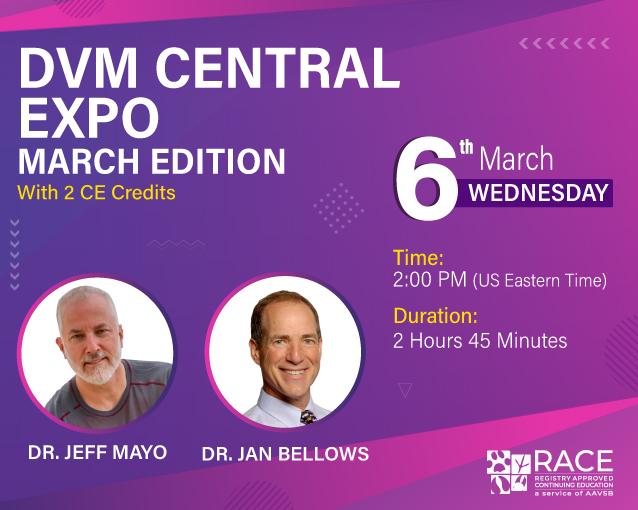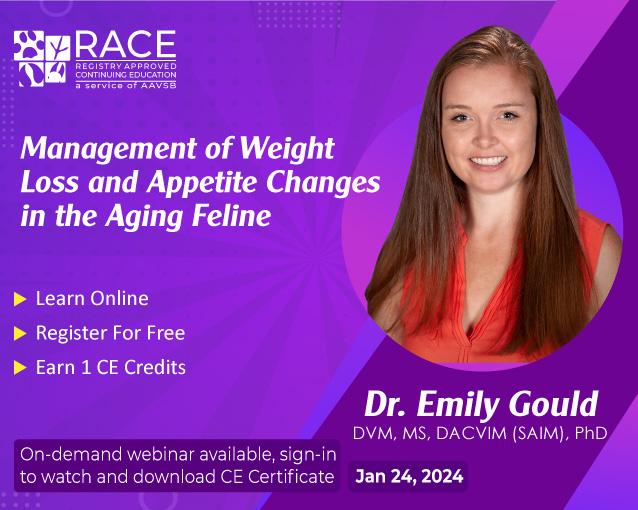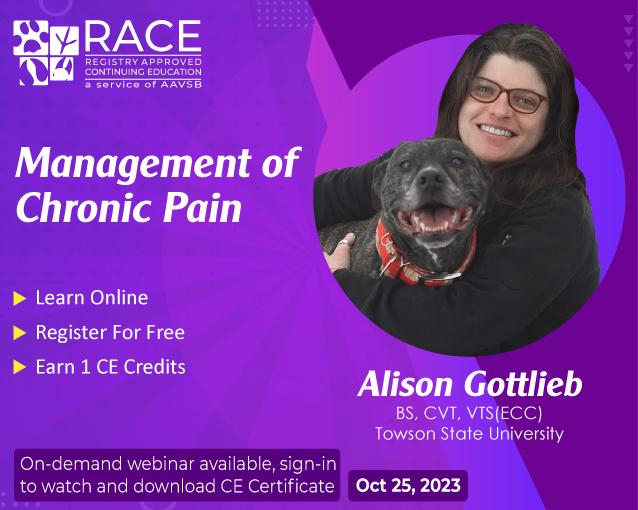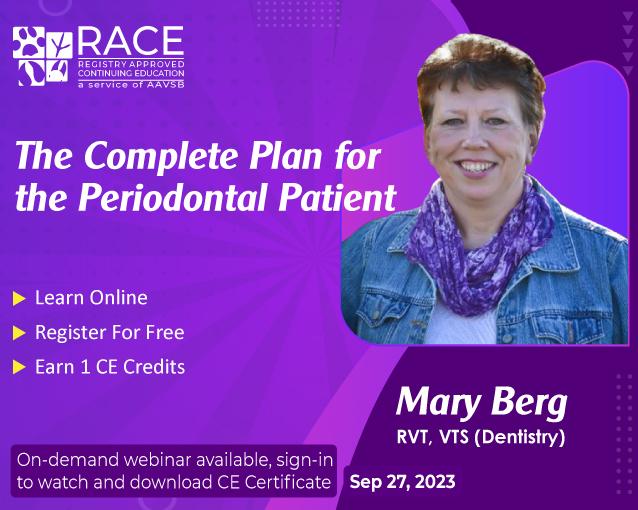Days
Hours
Minutes
Seconds
Catch up on our past veterinary CE webinars anytime! Access expert presentations, in-depth discussions, and valuable industry insights—all available on demand. Earn CE credits at your convenience and stay ahead in veterinary care.
Filter By
Categories
Speakers
Management of Seizures in Dogs
Date: Dec 10, 2025
Time: 8:00 PM (US Eastern Time)
Management of CKD in Dogs
Date: Nov 19, 2025
Time: 8:00 PM (US Eastern Time)
Cats are not Small Dogs: Tackling Diabetes the Feline Way
Date: Nov 12, 2025
Time: 8:00 PM (US Eastern Time)
New Tricks for the Diagnosis and Treatment of CHF in Dogs and Cats
Date: Oct 22, 2025
Time: 8:00 PM (US Eastern Time)
Bandaging 101: Mastering the Basics of Veterinary Bandaging
Date: Oct 15, 2025
Time: 8:00 PM (US Eastern Time)
The Addisonian in Crisis: The First Few Hours
Date: Oct 1, 2025
Time: 8:00 PM (US Eastern Time)
Diagnosis and Management of Feline Lower Urinary Tract Diseases
Date: Sep 10, 2025
Time: 8:00 PM (US Eastern Time)
Efficient Use of Technicians/Nurses in your Practice
Date: Sep 3, 2025
Time: 8:00 PM (US Eastern Time)
Corneal Ulcers: Diagnosis and Treatment
Date: Aug 20, 2025
Time: 8:00 PM (US Eastern Time)
Evaluating Brachycephalic Obstructive Airway Syndrome (BOAS) Dogs in General Practice
Date: Aug 13, 2025
Time: 8:00 PM (US Eastern Time)
Knowing Your Dental Instruments and How to Use Them
Date: Aug 6, 2025
Time: 6:45 PM (US Eastern Time)
Finding Balance: Live Well, Work Well, Be Well
Date: Jul 23, 2025
Time: 7:30 PM (US Eastern Time)
Weight Reduction in Cats: Tips, Tricks, and Tools to Make it Successful
Date: Jul 9, 2025
Time: 8:00 PM (US Eastern Time)
Fecal Microbiota Transplantation: "Why, When, and How"
Date: Jun 25, 2025
Time: 8:00 PM (US Eastern Time)
How Early Home Toxicity Treatment Can Make Veterinarians Look Like Heroes in the ER
Date: Jun 12, 2025
Time: 1:00 PM (US Eastern Time)
Clinical Application of Cannabinoid Therapy
Date: Jun 11, 2025
Time: 8:00 PM (US Eastern Time)
Meeting the Challenge of Cognitive Decline in Older Pets
Date: Jun 4, 2025
Time: 8:00 PM (US Eastern Time)
Diagnosis and Management of Acute Pancreatitis in Dogs
Date: May 28, 2025
Time: 8:00 PM (US Eastern Time)
Rehabilitation, Exercise, and Manual Therapy for Osteoarthritis
Date: May 21, 2025
Time: 8:00 PM (US Eastern Time)
Reptiles: Things Every Veterinarian Should Know
Date: May 14, 2025
Time: 8:00 PM (US Eastern Time)
Feline Anesthesia Techniques
Date: May 7, 2025
Time: 8:00 PM (US Eastern Time)
Psychological Safety in Veterinary Medicine
Date: Apr 30, 2025
Time: 8:00 PM (US Eastern Time)
Pet Travel Regulations: Yes, It's Regulated
Date: Apr 23, 2025
Time: 8:00 PM (US Eastern Time)
Extraction Dissatisfaction
Date: Apr 9, 2025
Time: 8:00 PM (US Eastern Time)
Navigating Feline Chronic Enteropathy
Date: Mar 26, 2025
Time: 8:00 PM (US Eastern Time)
Extraction in Action
Date: Mar 19, 2025
Time: 8:00 PM (US Eastern Time)
Join the Local Block Party
Date: Feb 26, 2025
Time: 8:00 PM (US Eastern Time)
Virtual Learn at Lunch Powered by DVM Central Marketplace
Date: Jan 16, 2025
Time: 12:30 PM (US Eastern Time)
Clinical Tips for the Management of Heart Failure
Date: Dec 11, 2024
Time: 8:00 PM (US Eastern Time)
DVM Central Expo: November Edition with 1.5 CE Credits
Date: Nov 20, 2024
Time: 2:00 PM (US Eastern Time)
Diagnosis and Treatment of Diseases of the Feline Oral Cavity
Date: Sep 18, 2024
Time: 3:00 PM (US Eastern Time)
DVM Central Expo - Dental Edition: Powered By VetandTech
Date: Sep 18, 2024
Time: 2:00 PM (US Eastern Time)
Procedures for Airway Problems in Brachycephalic Breeds
Date: Aug 15, 2024
Time: 4:00 PM (US Eastern Time)
Assessment of Airway Problems in Brachycephalics
Date: Aug 15, 2024
Time: 2:00 PM (US Eastern Time)
DVM Central Expo - August Edition!
Date: Aug 15, 2024
Time: 2:00 PM (US Eastern Time)
From Recruitment to Retention: Cultivating a Resilient Veterinary Team
Date: Jul 2, 2024
Time: 4:00 PM (US Eastern Time)
High-Quality, High-Volume Spay/Neuter Techniques
Date: Jul 2, 2024
Time: 2:00 PM (US Eastern Time)
Summer Expo at DVM Central
Date: Jul 2, 2024
Time: 2:00 PM (US Eastern Time)
Pruritus: Diagnostic Approach and Management in Dogs
Date: Jun 19, 2024
Time: 8:00 PM (US Eastern Time)
Common Ocular Emergencies in Veterinary Medicine
Date: May 15, 2024
Time: 8:00 PM (US Eastern Time)
Fear Free Dermatology: Exams that Won't Make Your Patients' Skin Crawl
Date: Apr 17, 2024
Time: 8:00 PM (US Eastern Time)
Exciting Developments in the Treatment of Canine and Feline Diabetes Mellitus
Date: Mar 20, 2024
Time: 8:00 PM (US Eastern Time)
Complications of Tooth Extraction: Avoidance and Management
Date: Mar 6, 2024
Time: 8:00 PM (US Eastern Time)
Radiosurgery: An Advanced Surgical Tool
Date: Mar 6, 2024
Time: 3:30 PM (US Eastern Time)
DVM Central Expo: March Edition with 2 CE Credits
Date: Mar 6, 2024
Time: 2:00 PM (US Eastern Time)
Efficacious Use of Acid Suppressants in General Practice
Date: Feb 21, 2024
Time: 8:00 PM (US Eastern Time)
Managing the Critically Ill Blocked Cat
Date: Feb 7, 2024
Time: 8:00 PM (US Eastern Time)
Cats in the Cradle: Or Is It? Management of Weight Loss and Appetite Changes in the Aging Feline
Date: Jan 24, 2024
Time: 8:00 PM (US Eastern Time)
Approach to the Poisoned Patient
Date: Jan 10, 2024
Time: 8:00 PM (US Eastern Time)
DVM Central Marketplace Virtual Expo
Date: Dec 19, 2023
Time: 2:00 PM (US Eastern Time)
Urethrostomies in Cats and Dogs: Indications and technique tips
Date: Nov 29, 2023
Time: 8:00 PM (US Eastern Time)
Surgical Extractions "Gentle Dentistry at its Best"
Date: Nov 15, 2023
Time: 8:00 PM (US Eastern Time)
Management of Chronic Pain
Date: Oct 25, 2023
Time: 8:00 PM (US Eastern Time)
Advanced Dental Procedures
Date: Oct 11, 2023
Time: 8:00 PM (US Eastern Time)
The Complete Plan for the Periodontal Patient
Date: Sep 27, 2023
Time: 8:00 PM (US Eastern Time)
Dietary Management of Chronic Enteropathies
Date: Sep 13, 2023
Time: 8:00 PM (US Eastern Time)
How I Manage Acute Kidney injury
Date: Aug 30, 2023
Time: 8:00 PM (US Eastern Time)
Periodontic Therapy "Getting to the Root of the Problem"
Date: Jul 26, 2023
Time: 8:00 PM (US Eastern Time)
Techniques for Tension-Free Wound Closure
Date: Jul 5, 2023
Time: 8:00 PM (US Eastern Time)
Hop on up: Rabbit Medicine
Date: Jun 28, 2023
Time: 8:00 PM (US Eastern Time)
Dressings and Topicals to Boost Wound Healing: When to Use What
Date: Jun 21, 2023
Time: 8:00 PM (US Eastern Time)
Effective Management of The Contaminated, Compromised Wound
Date: Jun 7, 2023
Time: 8:00 PM (US Eastern Time)
Why Did My Ex Cap Surgery Fail?
Date: May 24, 2023
Time: 8:00 PM (US Eastern Time)
Practicing Quality Dentistry: What to do with what you see
Date: May 10, 2023
Time: 8:00 PM (US Eastern Time)
Hip Dysplasia Surgeries Demystified
Date: Apr 26, 2023
Time: 8:00 PM (US Eastern Time)
How to Really Read Intraoral Radiographs
Date: Apr 12, 2023
Time: 8:00 PM (US Eastern Time)
Orthopedic Exam: How to be .Efficient but Thorough
Date: Mar 29, 2023
Time: 8:00 PM (US Eastern Time)
Recognizing the Top 15 Dog and Cat Dental Diseases
Date: Mar 15, 2023
Time: 8:00 PM (US Eastern Time)







































































